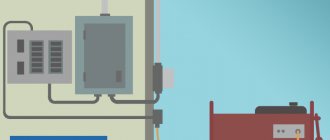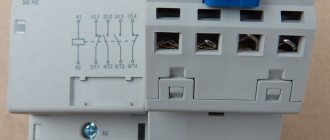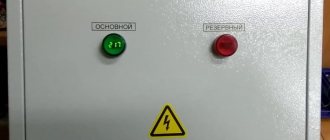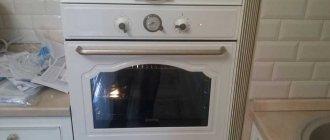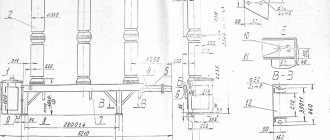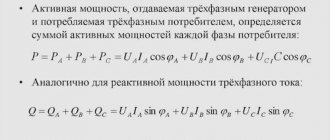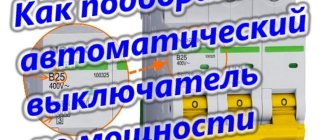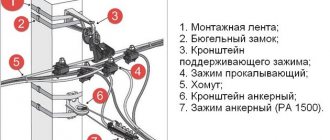produces switchboard electrical equipment with a voltage of 0.4 kV using Schneider electric components:
- Control cabinets for diesel generator sets
- Automatic transfer switch cabinets – ATS
- Switchgears (RU, RSB, ASU)
We also carry out modernization and repair of switchboard equipment by replacing components or installing additional elements using Schneider electric . Automatic transfer switch (ATS) - a cabinet for automatically switching on backup power to consumers in the event of a power failure from the main power source.
"Breeze Motors" offers you to buy automatic transfer switches (ATS) and automatic transfer switch cabinets (SHAVR) for 2 inputs, as well as for 3 inputs, at the following denomination:
50A, 63A, 100A, 200A, 250A, 400A, 630A, 800A, 1000A, 1250A, 1500A, 2000A, 2500A, 3000A.
| Denomination | Specification | Price, rubles |
| AVR 50A | ShchMP-1-0 IP66 (395x310x220), TDM, Automatic input/distribution - Schneider Electric) | 16 874 |
| AVR 63A | ShchMP-2-0 IP66 (500x400x220), TDM, Automatic input/distribution - Schneider Electric) | 18 191 |
| AVR 100A | ShchMP-3-0 IP66 (650x500x220), TDM, Automatic input/distribution - Schneider Electric) | 25 292 |
| AVR 125A | ShchMP-4-0 IP66 (800x650x250), TDM, Automatic input/distribution - Schneider Electric) | 32 420 |
| AVR 160A | ShchMP-5-0 IP66 (1000x650x285), TDM, Automatic input/distribution - Schneider Electric) | 36 632 |
| AVR 200A | ShchMP-5-0 IP66 (1000x650x285), TDM, Automatic input/distribution - Schneider Electric) | 46357 |
| AVR 250A | ShchMP-5-0 IP66 (1000x650x285), TDM, Automatic input/distribution - Schneider Electric) | 48 833 |
| AVR 400A | ShchMP-6-0 IP66 (1200x750x300), TDM, Automatic input/distribution - HYUNDAI) | 73 209 |
| AVR 630A | Housing ShRS-3 IP54 (1700x700x400), TDM, Automatic input/distribution - HYUNDAI) | 93 373 |
| AVR 800A | Housing ShRS-3 IP54 (1700x700x400), ABB, Automatic input/distribution - HYUNDAI) | 105 964 |
| AVR 1000A | Enclosures "Alpha" 2100x600x600 IP54 - ZEMI, Automatic input/distribution - ABB, ATS control based on the ATS021 Logic module - ABB, ATS of the 2 in 1 type with the start of a diesel generator set, control in manual and automatic modes, Busbar - Copper 50x10 | 688 523 |
| AVR 1250A | 2 inputs (Base: Housing “Alpha” 2100x800x800 IP54 - ZEMI, Automatic input/distribution - ABB, Busbar - Aluminum AD31T, PEN - Copper 60x10) | 228 241 |
| AVR 1250A | 3 inputs (Base: “Alpha” housings 2100x800x800 IP54 - ZEMI, Automatic input/distribution - ABB, Busbar - Aluminum AD31T, PEN - Copper 60x10) | 459 142 |
| AVR 1500A | Housing SHO70 2000x800x600 IP31 - TDM, Automation of input/distribution - TDM, ATS control based on the BUAVR Logic module - NPP "VEL", ATS of the 2 in 2 type with a sectional Automatic, control in manual and automatic mode, Busbar - Aluminum AD31T, Re — Copper 80x10 | 211 224 |
| AVR 2000A | Housing "Alpha" 2100x1000x800 IP54 - ZEMI, Automatic AVR - ABB, AVR control based on the Zelio Logic Module - Schneider Electric, 2 in 1 AVR, control in manual and automatic mode, Busbar - Copper 100x10 | 382 762 |
Differences between 2-input ATS and 3-input ATS
ATS with 2 inputs switches to a backup power source if the current in the main network disappears. If voltage reappears in the network, the ATS will reconnect.
ATS with 3 inputs is used when there are two network inputs and a backup source (dgu). The ATS switches between two inputs depending on the presence of voltage. The ATS will connect to a backup source if there is no electricity in two inputs at once. If voltage occurs in the main network, the ATS will switch back.
control cabinet is a microprocessor system for monitoring, measuring and controlling the generator set. The control provides a simple user interface with the generator set, digital voltage regulation, digital engine speed control, engine starting and stopping, generator set protection, error storage and emergency stop parameters. As a rule, this is built on the basis of well-proven panels: Compact Mage, Com Ap, Manual Mage . Breeze Motors performs programming, configuration and repair of control cabinets.
The automatic transfer switch cabinet (ATS) performs the function of automatically switching to a backup power source when the voltage of the main source disappears or its parameters go beyond acceptable limits.
Cabinets and drawers AVR up to 1000V
Automatic backup power cabinets and boxes
Options for ATS devices:
| ShchAP automatic power supply board according to the 2-in-1 scheme (2 three-phase or single-phase inputs, priority of the 1st input, without control of the backup input) Main advantages: - standard range of current versions - easy to choose; — mechanical blocking against erroneous operation; - performance | JAVR box for automatic reserve introduction according to the 2-in-1 scheme (2 three-phase or single-phase inputs, priority of the 1st input, without control of the backup input) Main advantages: - expanded range of current versions - up to 400A; — mechanical blocking against erroneous operation; - performance | ATS 2-in-1 with input priority selection and manual and automatic operating modes (2 three-phase inputs with a current of each up to 400A, selection of priority input, control of all inputs, manual and automatic mode. Performed on reversing contactors) Main advantages: — selection of priority (main) input at any time after installation of the cabinet; — mechanical blocking against erroneous operation; - performance |
| AVR100 cabinet for automatic introduction of reserve according to the 2-in-1 scheme without voltage relay (2 three-phase inputs, without voltage relay) Main advantages: — simplicity; — mechanical locking against erroneous operation | AVR200 cabinet for automatic introduction of reserve according to the 2-in-1 scheme (2 three-phase inputs with a current of each up to 400A, priority of the first input, control of all inputs. Performed on reversing contactors) Main advantages: — speed; — mechanical locking against erroneous operation | AVR300 automatic transfer cabinet according to the 3-in-1 scheme (3 three-phase inputs, switching to the third input in the absence of voltage on the 1st and 2nd) Main advantages: - performance (when performed on contactors - up to 400A); - large switched currents (when performed on circuit breakers with motor drives) |
| AVR400 cabinet for automatic introduction of reserve according to the 2-in-1 scheme (2 three-phase inputs for current 250A and higher, performed on circuit breakers with motor drives) Main advantage: - high switching current | AVR500 cabinet for automatic introduction of reserve according to the 2-in-2 scheme (2 three-phase inputs with sectioning, performed on contactors) Main advantage: - performance | AVR600 cabinet for automatic introduction of reserve according to the 2-in-2C scheme (2 three-phase inputs with a figure of eight for powering a sectioned load, performed either on reversing contactors - up to 400A, or on monoblocks - up to 800A) Main advantage: — reliable mechanical locking against erroneous operation |
| SHAVR cabinet for automatic introduction of reserve according to the 2-in-1 scheme on monoblocks (2 three-phase inputs up to 800A each, priority of the 1st input) Main advantages: - cheapness; — mechanical locking against erroneous operation | Automatic transfer cabinets in red housings (ATS for fire systems) We manufacture according to any design | AVR according to customer specifications We will develop any required AVR Main advantages: — you get what you need, not what is available; |
On request, ATS can be manufactured with the ability to manually switch between inputs, with overvoltage protection, with quality control of the supply voltage of each input, with limiting the power consumed from the input, ATS with equivalent inputs, with a mimic diagram, with control units ATS021, ATS022, ATS500 , siemens Logo!, ONI, PRO-relay EKF, with partitioning according to form 4a, 4b and many others.
Do you need the cheapest possible solution? A manual transfer device (RVR) may be right for you!
The AVR scheme can be developed FREE of charge for our customers for their specific situation!
Call or write to us and get the best equipment at a great price!
You can see prices for AVR drawers and cabinets in the Price List .
Basic requirements for ATS:
- minimum time for the ATS to operate (no more than 1-2 seconds, ideally a fraction of a second) after turning off the main power source.
- 100% switching on of the ATS when the bus voltage disappears
- single launch of AVR. Repeated starting of the backup source is unacceptable without eliminating the short circuit.
Switchgears (RU, distribution board, ASU) are designed to receive, distribute and account for electricity in three-phase alternating current networks with a frequency of 50 Hz, as well as to protect lines during overloads and short circuits.
AVR cabinet design
The shield has a durable body with a high degree of protection. Inside it is located electrical equipment, including such important elements as:
- starters;
- contactors;
- switches;
- machine guns.
Typically the housing is made of metal or high-strength plastic.
On the outside, the ATS board has light indicators and control devices. Thanks to them, you can evaluate the state of the inputs and, if necessary, use the ability to control the device.
Depending on how the cables are laid, their entry into the cabinet may be located at the top or bottom. The presence of a design feature - a control relay panel - allows you to regulate the input voltage and, if necessary, perform more precise parameter settings.
Control cabinet specifications
Operating conditions for the AVR cabinet:
- in terms of resistance to climatic factors, the SHAVR cabinet according to OST32.146-2000 belongs to class K1;
- in terms of resistance to mechanical loads, the SHAVR cabinet according to OST32.146-2000 belongs to class MS1;
The average service life of an AVR cabinet is at least 20 years.
| Parameter name | Meaning |
| Type of current | alternating three-phase |
| Rated voltage, V | 400/230 |
| Frequency Hz | 50 |
| Type of climate control according to | GOST 15150-69 UHL 3 |
The electrical insulation resistance of the control circuits among themselves and in relation to the housing is not lower than:
- 100 MOhm – under normal climatic conditions;
- 5 MOhm – at high humidity;
The overall dimensions of the AVR cabinet (height, width, depth, weight) depend on the type and brand of components used and the power of the diesel generator set;
The composition of the ATS components can be changed to suit the specific needs of the Customer, which are specified during the Order process.
Typical scheme:
Kinds
The ATS shield is selected depending on the voltage. There are three types of equipment:
- contactors;
- automatic;
- contactless.
ATS shield on contactors. The peculiarity of this type is the presence of two contactors: one starts power from the main source, the second from the backup one. Switching in the event of an emergency occurs instantly. In this case, the cabinet is blocked if one of the inputs is connected: when powered from the main source, the backup one cannot be started, just as vice versa - when the reserve is turned on, the main one will not start. The advantages of this installation are low cost, low heating and low power.
Automatic switchboard AVR. This cabinet is equipped with a special device that prevents sparks in emergency situations. Because of this, the switching time between the main and emergency sources increases, in contrast to the switchboard on contactors. The automatic shield is considered one of the most durable.
Contactless shield AVR. This cabinet is the most expensive of all due to its design feature: the contact group is in a vacuum, there is no electric arc, therefore, contact burning is minimized. There is also almost no electromagnetic interference. It is advisable to use a non-contact shield for currents above 400 A.
ATS in high-voltage circuits
In electrical networks with a voltage class of more than 1 kV, the implementation of an automatic transfer switch is more complex, but the operating principle of the system remains virtually unchanged. Below, as an example, is a simplified version of the 110.0/10.0 kilovolt step-down transformer circuit.
From the above diagram it can be seen that there are no backup transformers. This suggests that each of the buses (Ш1 and Ш2) is connected to its own supply transformer (T1, T2), each of which can become a backup for a certain time, taking on an additional load. In normal mode, sectional switch CB10 is open. The automatic transfer switch controls the operation of the TP through TN1 Ш and TN2 Ш.
When the power supply to Sh1 stops, the AVR turns off the switch B10T1 and turns on the sectional switch SV10. As a result of this action, both sections operate from the same transformer. When the source is restored, the reserve input system will reconnect the system to its original state.
Expansion of ATS functions
Programmable logic controllers (PLC) are used to control circuit breakers according to selected algorithms.
They already contain an ATS program, which only needs to be configured to implement one or another operating mode. Using a PLC, such as the AC500 controller, makes it possible to simplify electrical circuits, although at first glance the device seems complex. The ATS control can be located on the switchboard door in the form of a set of switches, buttons and indications. The standard solution already includes software. It is installed in the PLC.
Purpose
This device is necessary for only one reason - uninterrupted power supply to all electrical appliances of the end user, regardless of external factors. There is no longer any need to restore supplies with the help of a special team.
The human factor has never been canceled anywhere. Serious substations are always put into operation not from one place, but from two. Moreover, they are divided into sections. All this works in so-called electrical systems of the highest category
This is a necessary precaution so that reserve capacity can be quickly brought online, which the end user may not even know about.
The AVR connection diagram is not as complicated as it might seem at first glance. For example, you want to illuminate an important government facility for special purposes. It is necessary to make sure that when the main source is turned off and another is started, the light does not disappear during this very episode.
Requirements
The main indicators during the operation of the automatic transfer system:
- Fast reaction
- Safe inclusion
- Connection only after checking that there is no short circuit, that is, checking for the presence of blocking elements
- Trigger once
- Manual adjustment of the backup connection threshold, that is, a state of rest with small drawdowns within normal limits
- Connect only if the backup system has sufficient energy.
The simple modern diagrams that we will demonstrate will not be able to fully explain all the tricks and nuances of the operation of the automatic transfer switch. There are many logic circuits that only professionals know about. There is even a mechanical lock in case of the most emergency situations.
